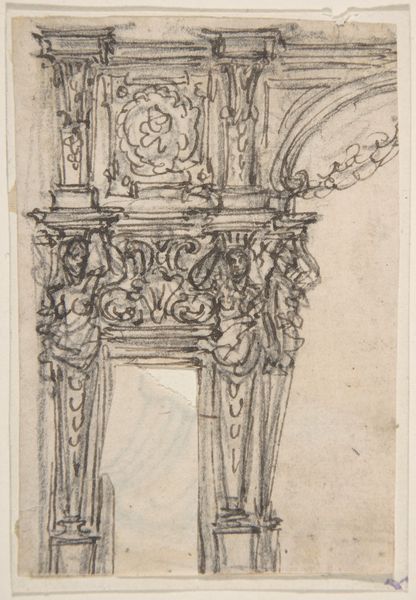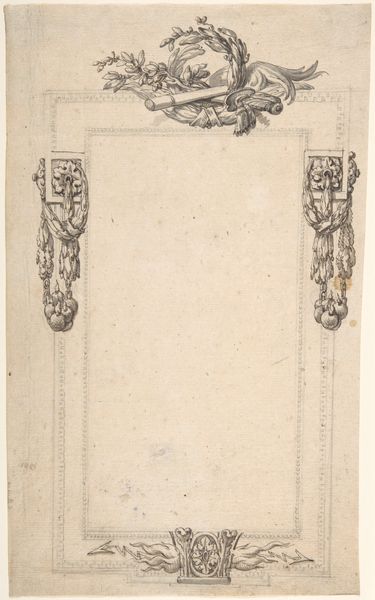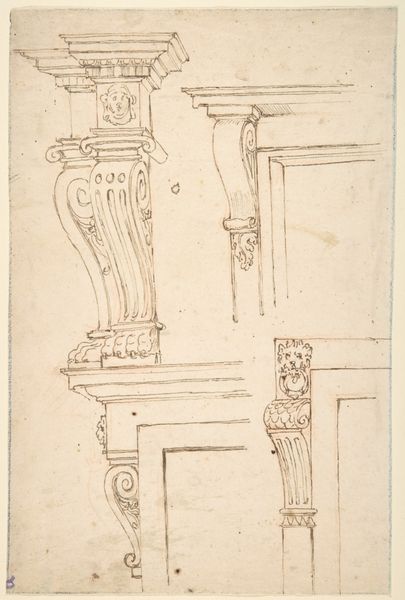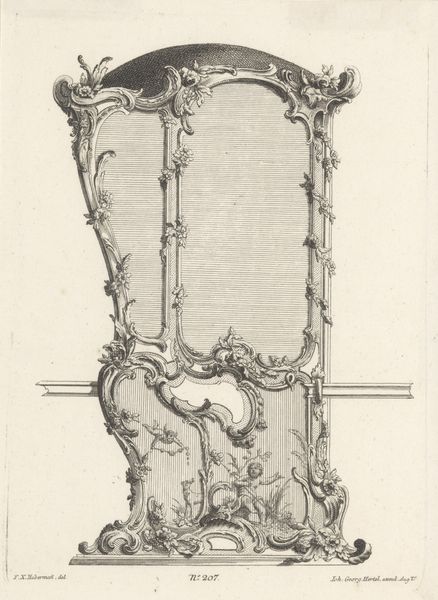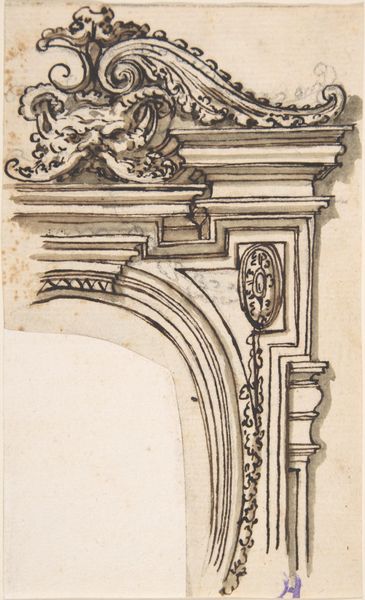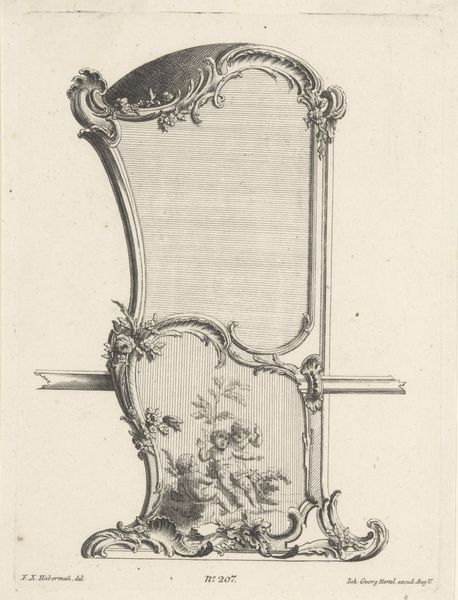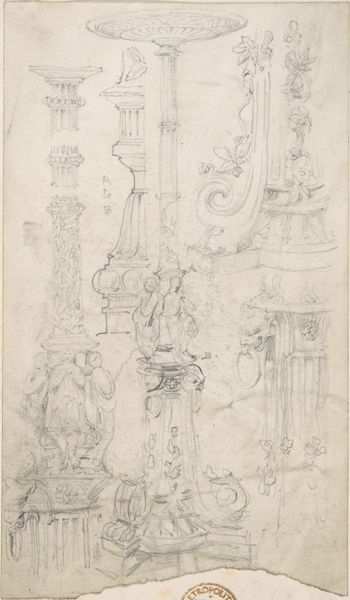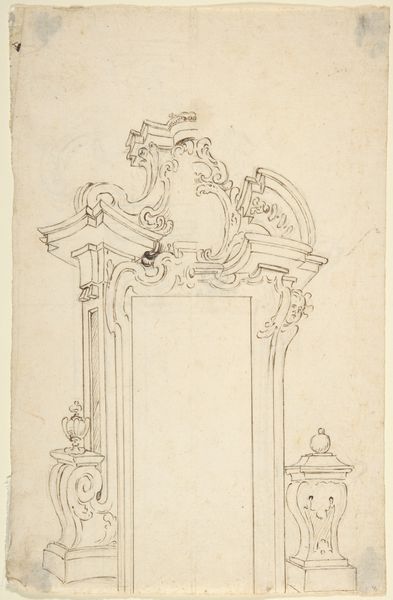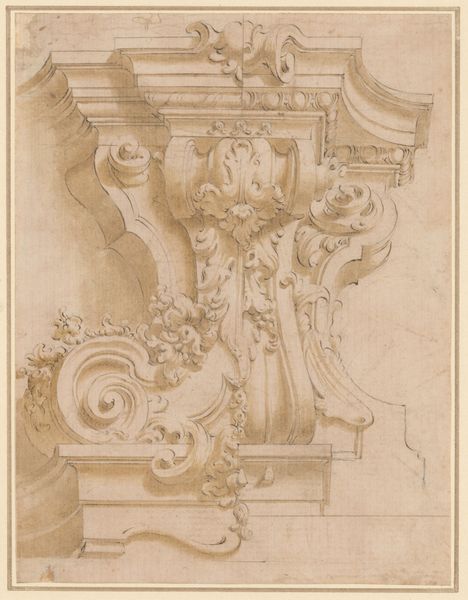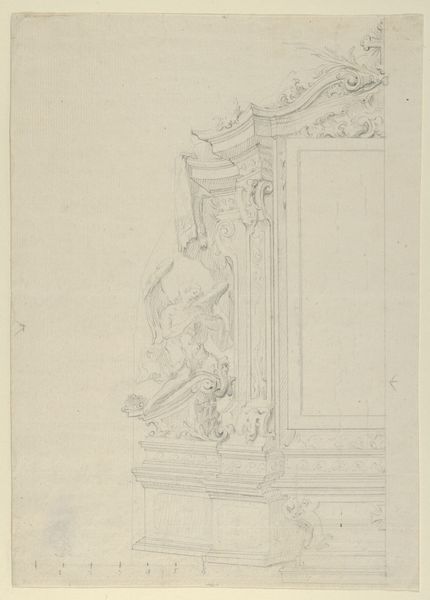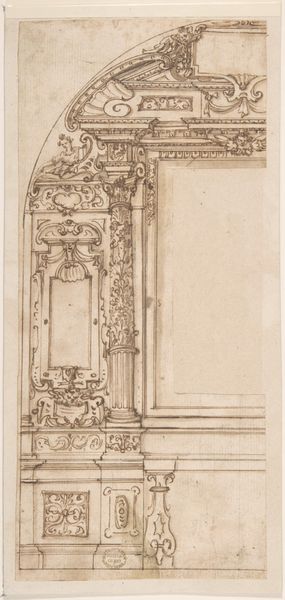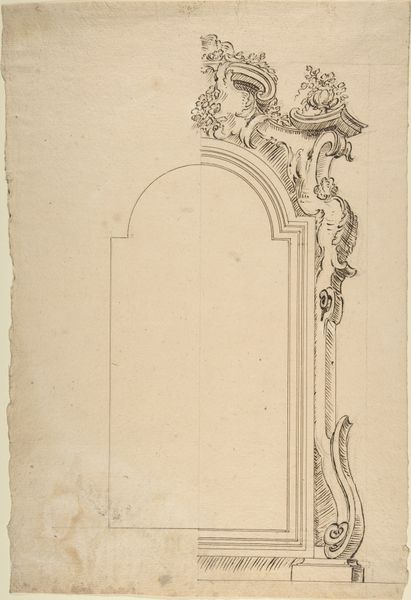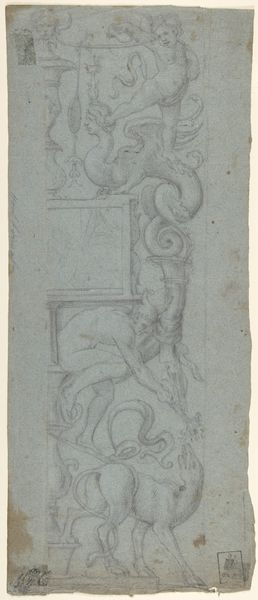
drawing, ornament, print
#
drawing
#
ornament
#
toned paper
#
light pencil work
# print
#
pen sketch
#
pencil sketch
#
personal sketchbook
#
ink drawing experimentation
#
pen-ink sketch
#
men
#
pen work
#
sketchbook drawing
#
sketchbook art
Dimensions: sheet: 9 1/2 x 5 1/4 in. (24.2 x 13.3 cm)
Copyright: Public Domain
Curator: Welcome. We're looking at a 17th-century drawing from an anonymous artist titled "Ornamental Design with Putto and Skulls", currently residing here at The Metropolitan Museum of Art. Editor: My first impression is stark juxtaposition: playful cherubs draped alongside grim skulls. There’s a clear fascination with mortality mixed with youthful innocence. What kind of function did ornament serve at this period? Curator: Well, ornament like this design reflected more than just decoration; it was a potent cultural signifier. The use of drawing suggests that designs for funeral monuments or perhaps cartouches were intended for elite patrons or church institutions. Death was quite present in seventeenth century Europe. Editor: It’s striking how much the sketch showcases both fine detail and deliberate incompleteness. You can see the light pencil work, especially in the drapery, contrasted with the bolder lines defining the skulls. Was this perhaps preparatory for other media? Curator: Almost certainly. Ornament, and designs such as this drawing, played an important role within workshops or for artists showing their mastery. Its circulation within a community of practice could result in architecture or sculpture throughout Europe. Also, notice the toned paper. The color enhances shadows, making those skulls even more prominent. Editor: Indeed, the materiality guides my eye right to the core tension here, it’s not just death, but decay contrasted against youth; skulls are intertwined with foliage. I wonder how viewers during the period reacted to these stark contrasts? Curator: The symbols were recognizable then. The putto, representing innocence, serves as a memento mori. These images weren't merely morbid; they reminded people of the brevity of life and need to focus on spirituality. It reflects the broader societal attitude where death was publicly acknowledged. Editor: So, art reminding its audience of their own morality… quite a useful social function. The production and subsequent viewership certainly would play different roles compared to today. Thanks, that helps appreciate this artist’s work in its historical moment. Curator: It reminds us about our connections to both the present and the past, reflecting on life’s beautiful yet often grim nature.
Comments
No comments
Be the first to comment and join the conversation on the ultimate creative platform.
